Engineered wood floors are mechanically structured wooden planks or boards that form a protective and decorative structure over the real floors of your house.
These form one of the major parts of the construction process for any residential or commercial building and, even more so, if you’re looking to remodel or renovate your spaces.
When it comes to engineered wood flooring, there have always been divided and mixed opinions. While some may love the beautiful finishes and mechanisms they provide, others have often questioned if they really go the mile for the price one pays for them.
However, that hasn’t dimmed the popularity of these floorings.
And if that makes you curious about these floors, then do give this one a read. As we are bringing you a detailed guide on all of the types of engineered wood flooring, you can avail right now!
Let’s get started, shall we?
Types of Engineered Flooring
-
Glued Engineered Flooring
Glued engineered flooring requires strong adhesive to be applied to the joints. Not only does that help to lay down the layers, but it specifically put on the joints to maximize the grip.
The installation of glued engineered flooring can be a tedious process as you have to put the glue on each board so that you can fix them.
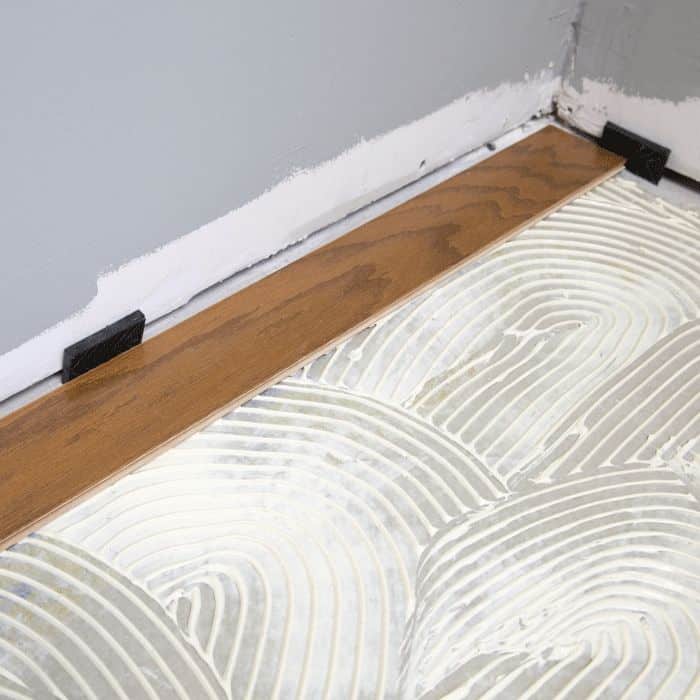
Alignment can be a tough job since you would have to be quick to put the boards down, once the glue goes on them. Otherwise, there is a risk of the glue drying off fast or getting smeared on other surfaces.
Also, once the boards are attached to the surface, they can’t be rearranged in any other way. One would have to rip them off if they wished to realign.
Also, the cost of glue could be substantially high for covering the required number of boards.
- Costs cheaper than most other types of flooring
- Available in various textures, tints, and materials
- Provides sturdy bonds on the joints
- Offers substantial grippage
- A pretty tedious job
- Damaged parts cannot be replaced
-
Glueless Engineered Flooring
Engineered floors generally require to bond with glue or strong adhesive on the surfaces of the floors. Glueless engineered floors, on the other hand, come with a unique “tongue and lock” mechanism that interlocks the edges together to form a tight bond.
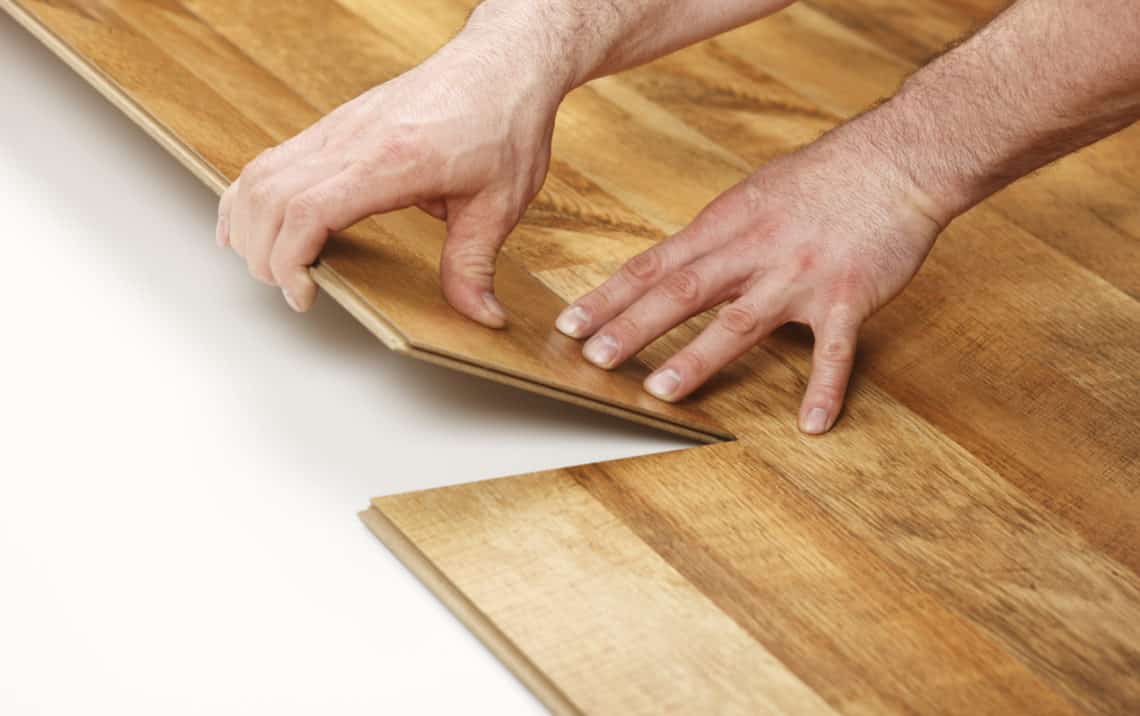
Glueless flooring will work smoothly with simple and uncomplicated floor surfaces. It can be a hassle to put on already textured surfaces, as the edges can fail to interlock correctly with the surface.
Make sure the floor surface is correctly leveled before you go ahead and install glueless engineered flooring for a smooth overall finish.
Owing to its straightforward and hassle-free installation, one can take up installing glueless engineered flooring as a DIY project.
- Easy to install
- Can be done as a DIY project
- Saves significantly on labor costs
- Provides beautiful finishes for your floors
- Versatile finishes
- Pretty expensive
-
Click Lock Engineered Flooring
The click-lock mechanism involves a tongue and groove, wherein the “tongue” locks into the groove. It may or may not involve the use of adhesive.
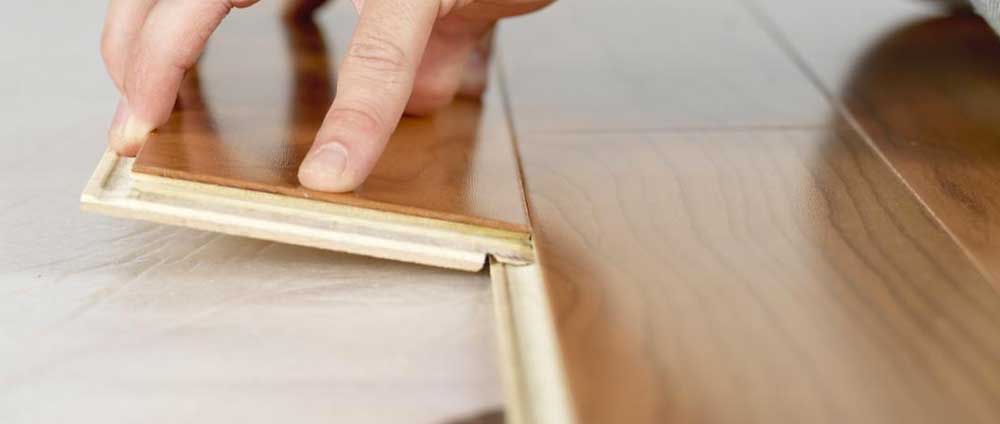
These click-locking structures are designed to have a tight fit that allows the boards to lay down in flawless and seamless alignment with the subfloor.
Click-lock finishes providing highly polished, beautiful surface finishes that make for a stunning appeal. These come in various types of woods, widths, and finishes along with varying degrees of thicknesses.
One of the major benefits of this is that you do not have to worry about getting adhesive all over the place and on yourself, for that matter.
These boards can also be easily unsnapped, for that matter, which allows you to easily replace any section if that gets damaged, with no further damage done to any of the surrounding parts.
- Very easy to install
- Provides brilliant finishes
- No hassles of getting adhesives all over the place
- Easy to unsnap the boards in case you needed to replace damaged boards
- Available in a lot of wood varieties, colors, and sizes
- Can be an expensive alternative
-
Pre-glued Engineered Flooring
Unlike glueless or glued flooring, pre-glued engineered flooring comes with joints that already have a strong adhesive applied to them. To activate this adhesive or glue, all you have to do is moisten that particular part a bit using water before you align and conjoin the boards.
These instant or pre-glued bonds provide a strong grip to the boards and a substantial adhesion with the surface underneath them.
It gives you the time to align the boards in the preferred order and settle on a particular flooring pattern, as the adhesive is still going to be dry while arranging the pattern.
Similar to glued flooring, the damaged parts of pre-glued surfaces, too, can’t be replaced.
- Involved lesser hassles than glued engineered floors
- Could be maneuvered easily while arranging the layout
- No risk of getting the glue smeared everywhere
- Can be taken up as a DIY project if you have the time
- Is an affordable option
- Could be a time-consuming job
- Damaged parts can’t be replaced
-
Laminate Flooring
Laminate flooring provides some of the most stunning wood flooring finishes. Laminate floorings basically imitate the appearance of natural wood, tile, or stone.
These are composed of layers of adhered fiberboard with the image of a wooden, tile, or stone texture printed on top of them.
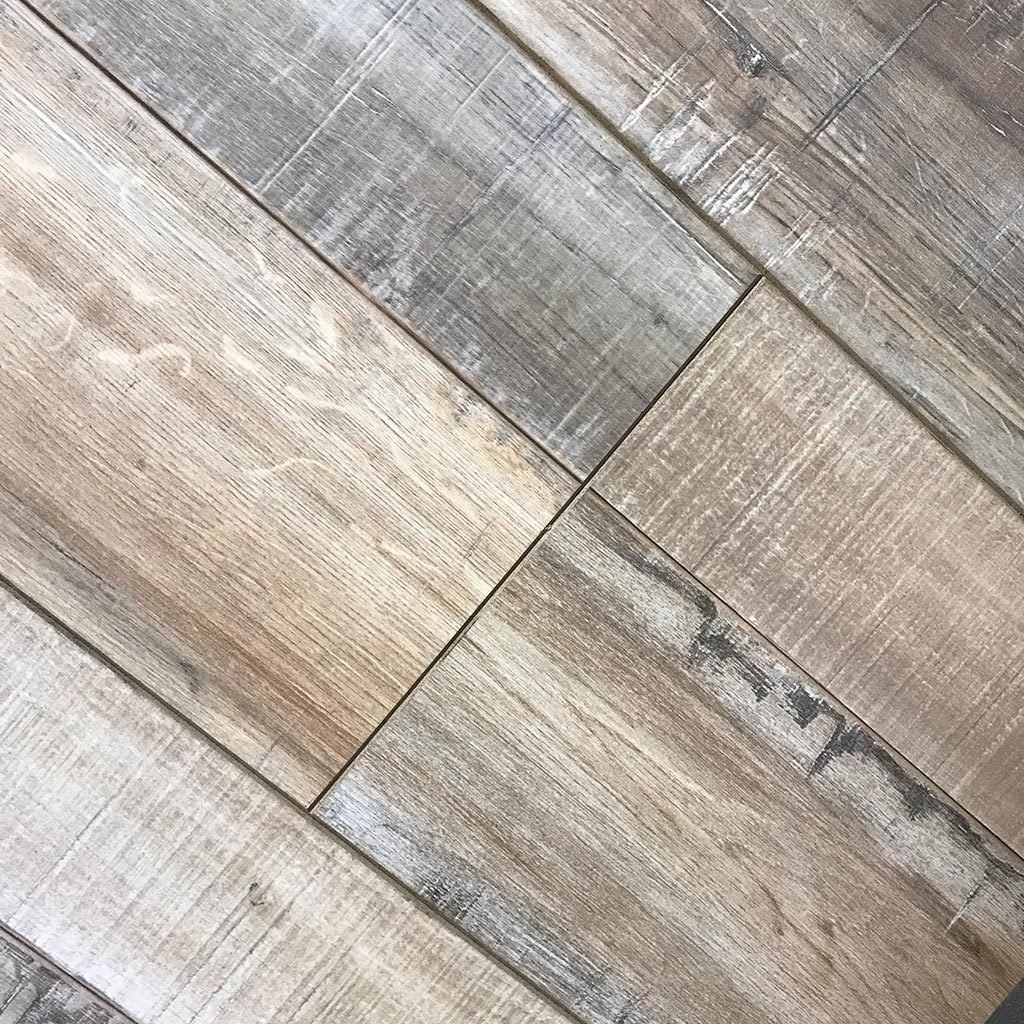
They are substantially resistant to scratches and high temperatures. However, they may be prone to water damage if there arises an issue of water seepage and dampness in your building. These are overall very easy to maintain, and fortunately, cost much lower than many other flooring materials.
A vital thing that you have to understand over here is that laminate flooring is not engineered flooring, which uses real plywood boards that are laminated together. Instead, these consist of fiber core boards with a photographic print layer and a clear topcoat of melamine resins.
- Versatile designs can be used anywhere
- Available in many different styles, patterns, and textures
- Resistant to high temperatures and scratches
- Provides stunning finishes
- Very easy to maintain
- Affordable flooring option
- May not be entirely resistant to water damage
- Doesn’t use real wood, tile or stone
-
Stone Flooring
Although this guide aims at giving you detailed information about wood flooring, you need to know what other materials are popularly used for flooring purposes so that you can understand the differences better. And one of them is engineered tile or stone flooring.
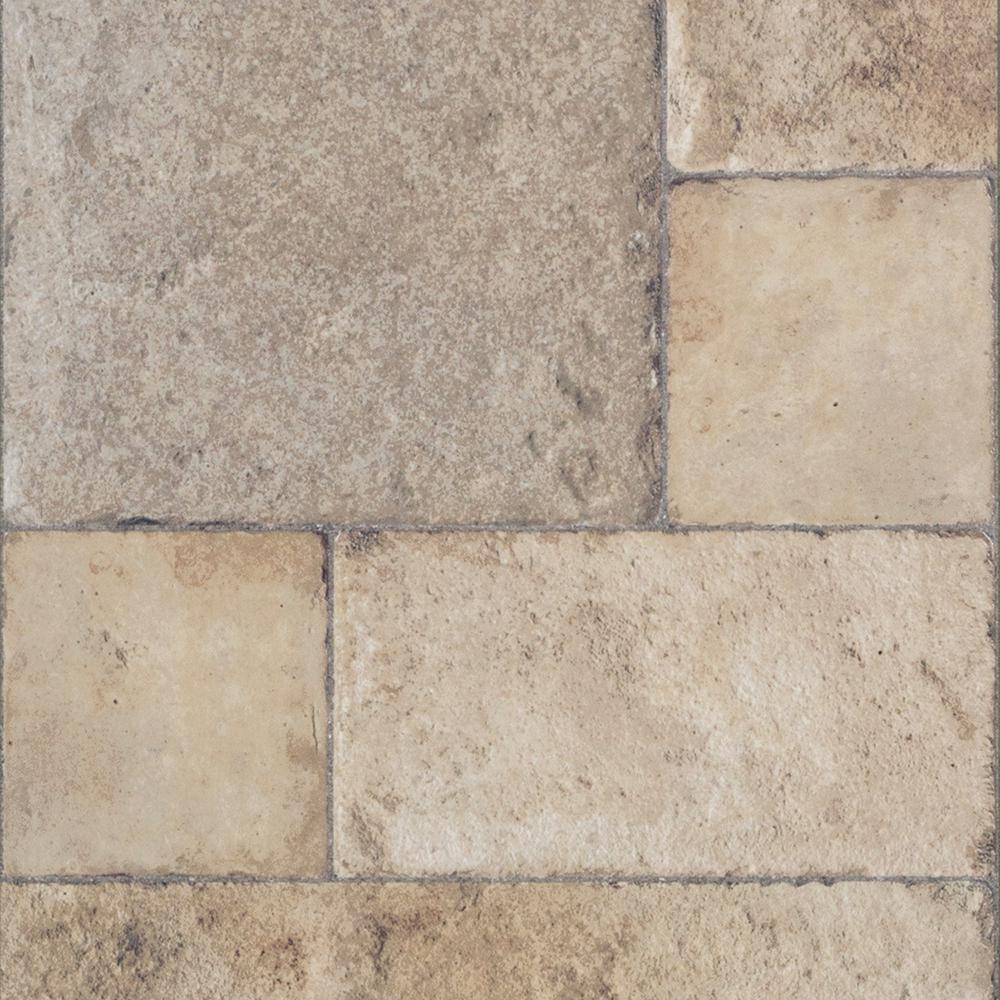
Engineered stone flooring is basically made using a combination of crushed stone and polymer resin adhesive. Engineered stone can also be made of limestone, quartz, or crushed marble.
And while ceramic stone flooring ensures a high shine, unique, and elegant finish, the substantially high price of it often makes it pretty difficult for homeowners to reach out for it.
On the other hand, engineered stone flooring gets you almost the same effects at a significantly lesser cost.
Stone floors have significant resistance to abrasion, high temperatures, and moisture damage than engineered hardwood, ensuring service for more extended periods of time.
- Durable and long lasting
- Quite affordable than granites and marble
- Gives off a lustrous shine
- Resistant to high temperatures and moisture damage
- Delicate finish can get scraped or chipped
-
High Pressure Engineered Flooring (HPL)
HPL is made by saturating several compact layers in phenolic resin and processed under high pressure. This makes the boards incredibly durable and resistant to most kinds of damaging external factors. These could be used for both indoor and outdoor spaces.
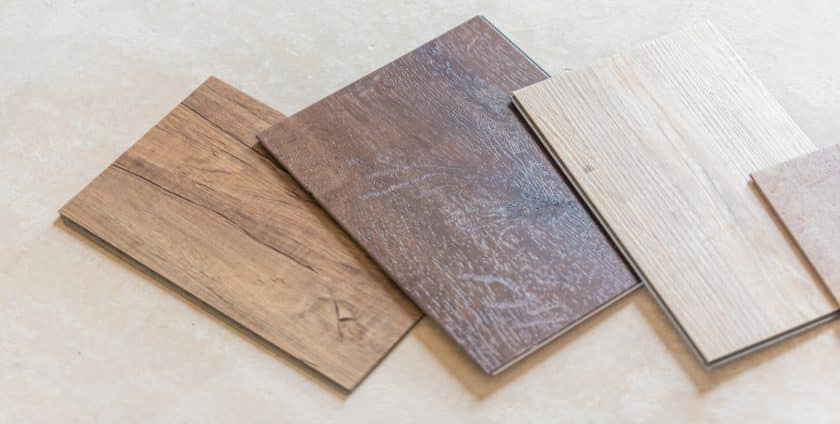
HPLs are completely resistant to fluctuating temperatures, high pressures, and chipping, ensuring for a marvelous wooden finish for all kinds of spaces. As a result, it is also very easy to clean and maintain them.
However, the disadvantage of opting for HPLs mainly involves the high costs it brings with it. These are not only substantially expensive themselves.
But since HPL boards are even costlier than DPL (Direct Pressure Engineered Flooring) counterparts, these can also raise the cost of engineered hardwood installation per square meter.
- Incredibly durable engineered wood flooring option
- Provides stunningly beautiful finishes
- Highly resistant to increased temperatures and pressure
- Wouldn’t crack, stain or scratch
- Could be used both indoors and outdoors
- Pretty expensive
- Can raise installation charges significantly
-
Tile Flooring
Similar to engineered stone flooring, engineered tiles consist of marble and stone compressed under high pressure. These are them conjoined with a strong adhesive that holds the shape and structure of the tiles.
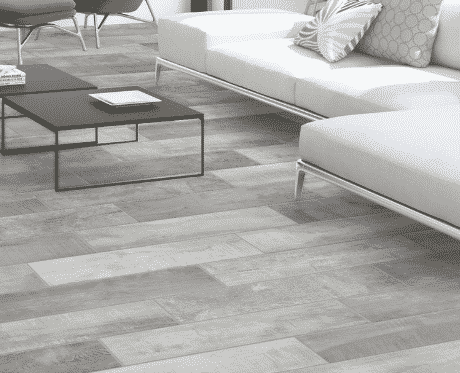
However, tile flooring usually wears out too soon and is prone to low photographic quality over time with long durations of exposure to sunlight. These are way more delicate than solid marble or granite surfaces, for that matter.
One of the primary issues with tiled floors is that they aren’t resistant to scratches or chipping, which can completely damage the polished appearance of tiled floors.
Engineered tiles are ideal for spaces that have lesser traffic and for indoor flooring purposes.
- Provides gorgeous designs, patterns as well as colors
- Colors could fade after a point of time
- Complements all kinds of decor
- Could be cleaned easily
- Not scratch and chip resistant
- Has no mouse-pad mode
- Could be labor-intensive to install
-
Direct Pressure Engineered Flooring
Direct pressure laminate or engineered flooring is made by fusing multiple layers of wooden boards at the same time under significant pressure.
There are essentially four types of layers found in this engineered flooring. These include a wear layer, a decorative sheet, a high-density fiberboard, and a balancing layer at the bottom.
Now, although DPL boards consist of a fusion of several layers, the entire process is carried out and completed in a single step. Unlike HPL floorboards that are processed and treated under high pressure to provide strong bonds, DPLs often turn in weaker bonds than that.
This is one of the factors that take down the cost of these engineered floorboards, making them less expensive than HPLs.
DPLs can, however, be used in areas that usually get low traffic. Even though these are not as strong as HPLs, they can hold up decently well for a considerable period of time without much breaking or tearing. These are also available in more colors and styles than the HPLs.
- Versatile wooden boards provide decent finish and performance
- Affordable option than HPLs
- Available in many colors and styles
- Provides decent value for the money
- Not as strong as HPLs
- May sustain sun and moisture damage
-
White Oak Engineered Wood Flooring
White oak is an incomparable alternative to wooden flooring. It looks ravishingly beautiful on the interiors of your house. And the prettiest thing about it is the subtle golden undertone that it reflects, providing your interiors with a glow.

White oak comes with a Janka rating of 1360, which makes it more durable and resilient than most species of softwood.
The finish of white oak panels and flooring lays grayish and brings in a versatile design for most household decor.
White oak panels and engineered flooring can take an incredible amount of pressure and are commonly used for both indoor and outdoor purposes.
However, engineered wood flooring made of white oak can be really expensive and hence, problematic for most people to opt.
- Provide stunning finishes with golden undertones
- Incredibly durable and resilient against pressure and damage
- Offers a versatile layout for all spaces
- Resists water and sun damage
- Highly expensive
-
Red Oak Engineered Wood Flooring
Oak is a common choice for engineered wood flooring. Red oak floor panels are highly admired for their beautiful, lustrous finishes. It lends a uniformity in tonal variations for the floors of your house, lending a very cohesive look to your interior decor.
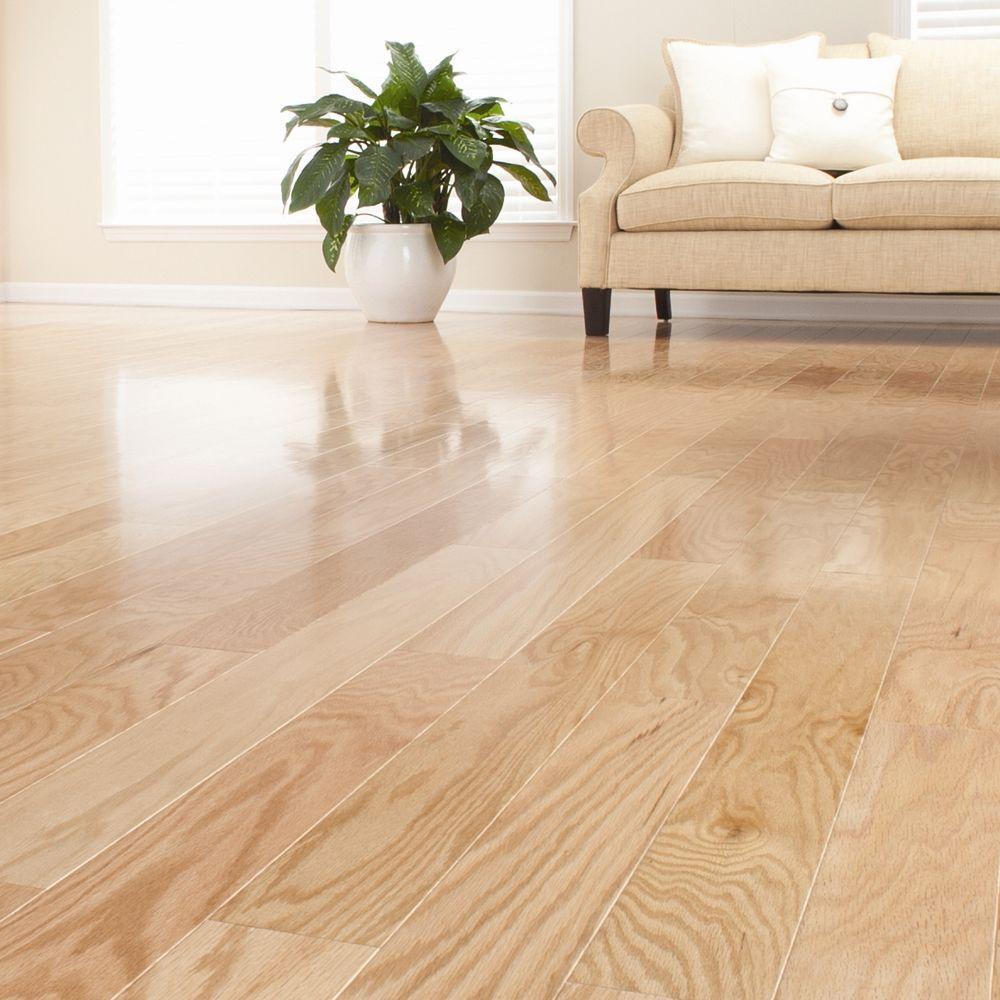
Unlike the golden undertones of magnificent white oak boards, red oak comes with pink undertones. It looks stunning in muted lights or dimly lit spaces.
Red oak engineered floors are highly sought-after for their looks. But, at the same time, they are also substantially durable for flooring purposes.
The only thing that can irk you is that it scores less on the Janka ratings (1290) than white oak boards. This means that it is more susceptible to damage than the latter.
- Looks absolutely gorgeous in household
- Complements and accentuates all kinds of decor
- Holds up well under pressure
- Expensive
- Not as durable on white oak
-
Maple Engineered Wood
Maple-engineered wood flooring is considered to be one of the best woods for household purposes. This is because it comes with a Janka rating of 1450, scoring high up in strength and durability.
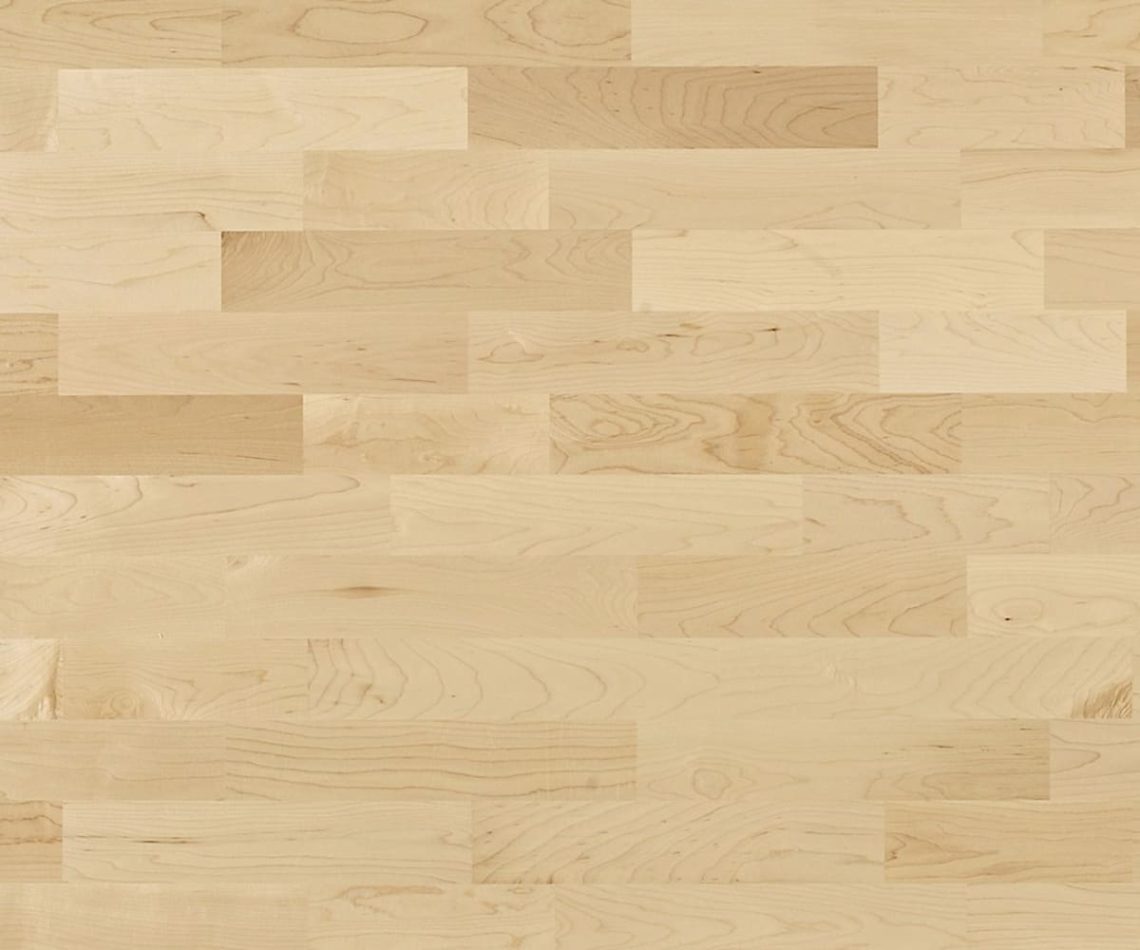
It fares exceptionally well for areas that get a lot of traffic without breaking and collapsing underneath.
Maple wood comes with lighter streaks and only in a few shades, unlike most other kinds of wood. It can provide a cleaner finish with little marks or patterns than other wood variants.
Maple wood can work really well if it is pre-stained or pre-finished, especially when it comes to flooring purposes.
Overall, maple wood flooring can provide you with good value for the money you pay for it.
- Incredibly hard and enduring-ideal for outdoor purposes
- Gives a cleaner finish than most other woods owing to lesser patterns and shades
- Holds up substantially well under constant pressure
- Blends well with most interior decor
- May be expensive, but that will depend on the grade and dealer
-
Carbonized Bamboo Wood
Carbonized bamboo is a very popular alternative to conventional wooden flooring.
Even though it is not a practically structured wood-based material, it does guarantee a cleaner finish than many traditional wooden options.

Depending on the type of bamboo and the dealer who is offering you a certain grade of carbonized bamboo, these can range from 1000 to 1100 in Janka ratings, and thus, can be more prone to wear and tear.
And since these are low on Janka ratings, carbonized bamboo wood materials generally cost pretty less than most of their wooden competitors.
Engineered wood flooring made of carbonized bamboo wood scores substantially high on aesthetic appeal and works well for areas that are low on traffic
- Provides a charmingly beautiful and delicate appeal
- Can be used for many purposes owing to their versatility
- Cost significantly lesser than conventional woods
- Offers cleaner finish than most woods
- Not a very sturdy alternative
-
American Cherry
Although American Cherry scores a mere 950 on its overall Janka rating, American Cherry is one wood that is highly admired and desired for its stunningly beautiful finishes.

It lends regularity and uniformity to the rest of the furniture and decor elements in the room which makes for a powerful statement for the overall space.
This is one of the primary reasons why American Cherry panels are greatly used for both domestic and office spaces.
It is also to be noted that American Cherry wood can, in fact, change from a glaring, vibrant red to reddish-brown and even to darker, richer tones on exposure to light.
American Cherry has a medium density, which provides it with a marvelous bending property, significant resistance to shocks, and low stiffness.
But due to its low Janka rating, it is not suitable for areas that have high traffic or are frequented by sharp objects.
- Known for its gorgeous looks
- Has a high resistance to shocks
- Significantly flexible wood
- Comes at a reasonable price given its low Janka ratings
- Scores low in Janka rating and hence not that tough
- Not suitable for high-traffic areas
-
Rosewood
Rosewood, much similar to what oak or maple will fare for you, has immensely high durability. It has a rating of 2200 lbs and can sustain an immense amount of pressure owing to that.
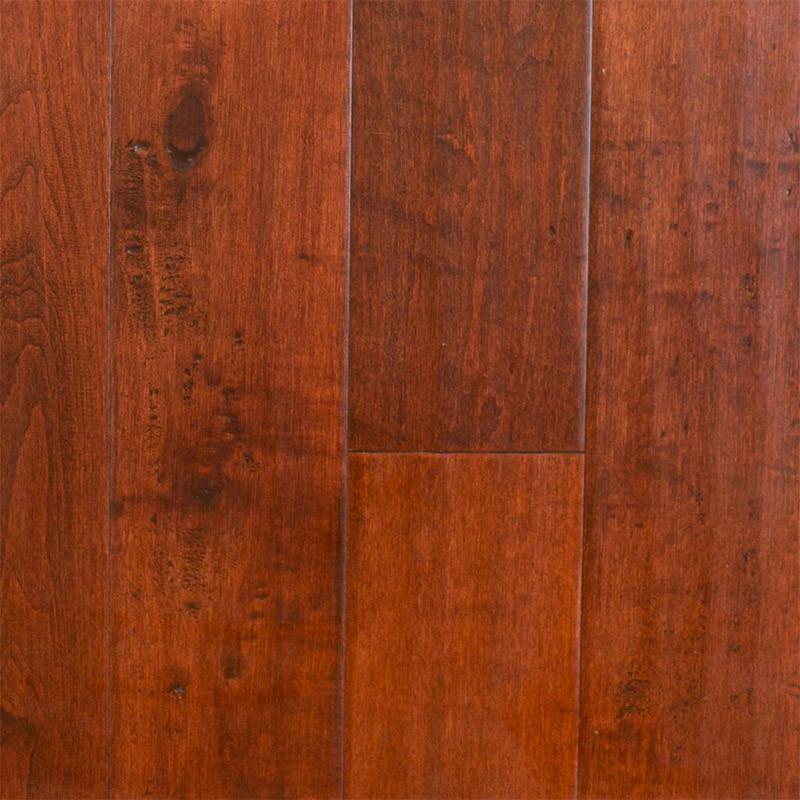
Since rosewood resist regular wear and tear to a great extent, it is often used in areas that get substantial traffic. This contributes to the versatility of the wood.
Rosewood is also available in a wide range of colors. In fact, it has a unique grain pattern for which it’s used for creating elegant panels for offices and homes alike.
- Immensely durable wood can sustain a high amount of pressure
- Could be used for both indoor and outdoor use
- Comes in a significant range of colors
- Has a unique grain pattern
- Can be expensive
- Not very flexible
-
Birch
Much like what oak wood offers you, birch is available in two shades: red and yellow. The Janka rating for both variants of birch wood is 1260 which makes them reasonably durable for most household purposes.
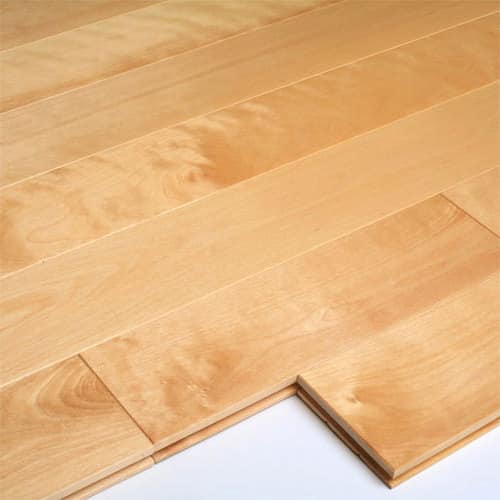
Birchwood-engineered floors deal substantially well. Birch floors can be used for spaces that get low traffic and are expected to fare as storage spaces or single rooms. As long as you do not put them in spaces leading up to common walking areas, these should be fine.
The undertones of birch could vary with quality, and it can be a hassle to determine what could suit you best. You can seek professional guidance on the grain that would complement your floor space ultimately.
- An affordable alternative to most other hardwood options
- Holds up not too bad under pressure
- Available in two pretty variants
- Versatile wood allows for easy flooring installation
- Not too high on durability
- Can be tough to select variants
-
Amendoim
The most popular of exotic hardwoods, Amendoim or Brazilian oak (as it is often referred to by natives), is greatly desired for its richness of color, its stunning texture, and high endurance.
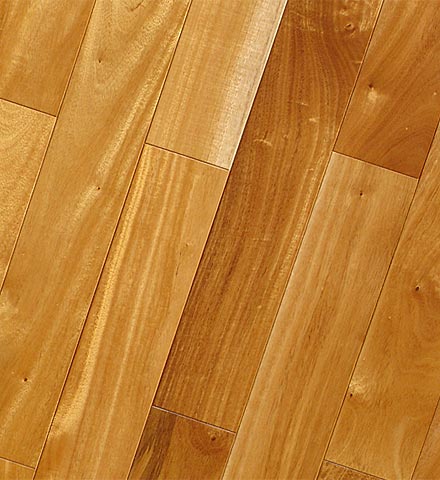
Amendoim comes with a marvelous russet undertone that offers a wide range of options for home decor, complementing an enormous array of furniture options.
Amendoim comes with a Janka rating of 1912 that bags one of the best positions amongst many engineered hardwood floors. It can exhibit unparalleled hardness even amongst other several other light wood flooring alternatives, which makes it a considerably versatile wood.
However, Amendoim can wear out on prolonged exposure to heat and light and lose its color.
Therefore, it is mainly preferred for indoor use.
- Offers rich colors with a stunning russet undertone
- Significantly durable and can sustain a lot of weight and pressure
- Preferred for a great range of interior and furniture decor
- Flexible wood flooring option
- Can fade out in the sun
-
Walnut
You could get magnificent, engineered flooring when it comes to walnut wood. Walnut offers rich color variants and patterns that make for beautiful styles and designs for furniture and panels.
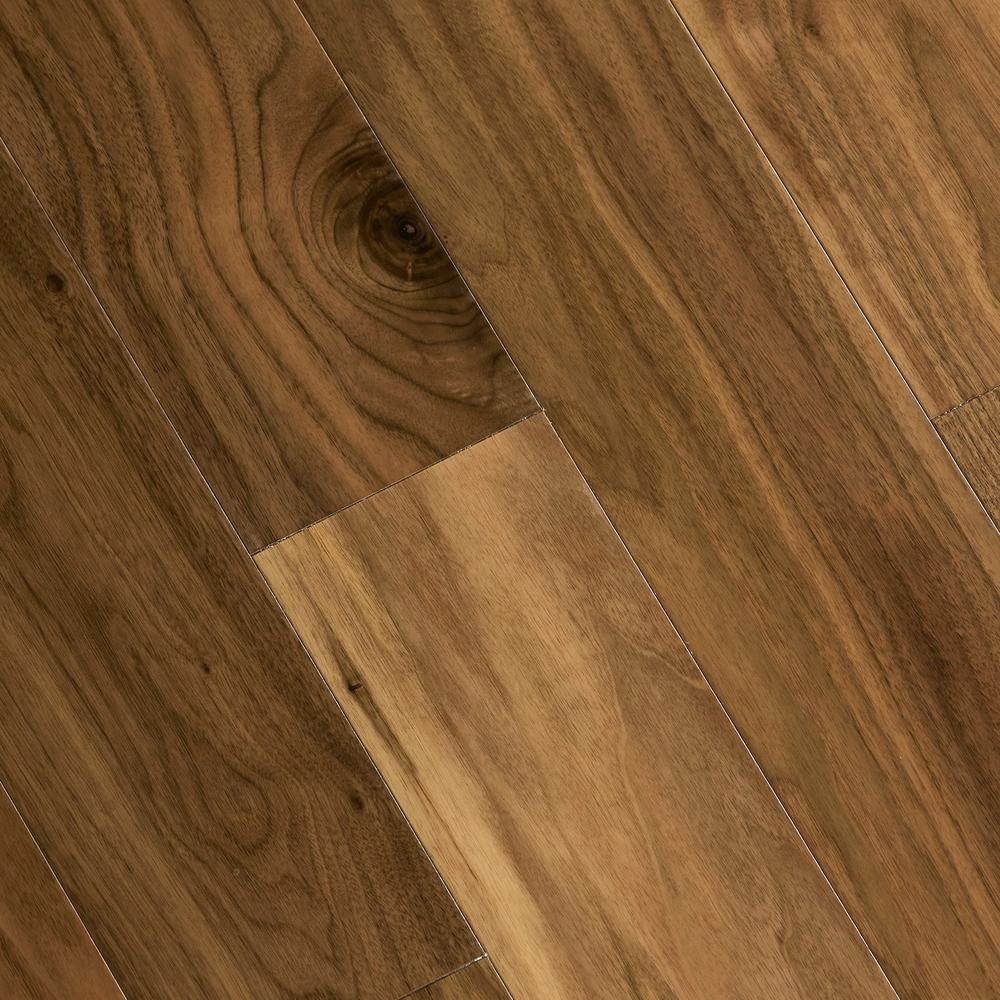
Walnut is a significantly hardwood. The ratings can range from 3800 to 1010, depending on the quality you get.
The best thing about this is that walnut is one of those very few species that is flexible to suit a wide range of purposes, along with being durable enough to sustain a lot of pressure.
Given its versatility, you do a lot of options that will suit the levels of traffic in the areas you want to put them in.
- Looks beautiful given its color tones and grain pattern
- Can take a lot of traffic
- Versatile and flexible wood density allows you to use it anywhere
- Could be difficult to get high quality
-
Hickory
Hickory is commonly used for many panels and flooring in many households. It is greatly sought-after for both its high durability and appealing designs.
A Janka rating as high as 1820 makes Hickory one of the most durable wood species available.
It could be used for areas of high traffic without much concern.
It is a highly versatile wood that is generally used for a great number of purposes.
When it comes to engineered floors, you can get several options in designs and styles.
For beautiful and charming designs for your floors, do make sure whether you require shagbark or shellbark hickory.
Hickory can, in fact, be more enduring than oak or maple. Therefore, it can be an expensive affair.
- Could be more durable than maple or oak
- Significantly resistant to regular wear and tear
- Comes in charming designs
- Could be used in places of high traffic
- Could be significantly costly
-
Santos Mahogany
Mahogany is a popular hardwood variant that scores 2200 on the Janka ratings. It is an exceptionally hard species of wood that is known for its rich, dark color.

The dark shades of mahogany come with different tonal variations. It gives your house a beautiful rustic look that can be hardly rivaled by other exotic woods.
And although the cost of mahogany is pretty high on the global market, it lasts twice as long as other materials, returning value for every penny.
The quality of mahogany actually gets better over time, improving the durability and finishes of the wood.
- Incredibly hard and sustains a high amount of pressure
- Offers rich dark shades that look stunning anywhere
- Quality of wood improves over time
- Lasts significantly long
- Highly expensive
-
Timborana
Timborana comes with a Janka hardness rating of 1570. This is another popular species of wood that provides great options for flooring. Timborana gives off a russet appearance and hence is an ideal alternative for home decor and furniture scenarios.

Owing to its substantial hardness and durability, Timborana is widely used for both residential and official spaces.
One of the primary advantages to this is that it costs less than many wood species, and hence, could bring you an exotic finish at a reasonable price tag.
- Sufficiently durable and resistant against damage
- Provides a beautiful russet appearance
- Costs less than most other wood variants
- Can warp under heat or moisture
-
Bamboo
Regular and conventional bamboo is a versatile material for furniture, panels, and flooring. The engineered flooring made of this compressed grass can, in fact, outlast most wooden counterparts.
Bamboo also provides neat and clean lines since it do not have patterns or grains as such. It is also a highly versatile material for construction that allows high flexibility for most purposes.
However, bamboo doesn’t come with a universal Janka rating. It will mainly depend on the quality you get from your dealer.
- Offers aesthetically pleasing designs
- Can work as efficiently as most wood counterparts
- Highly flexible and versatile
- Ensures neater finish than wood
- Pretty affordable
- Doesn’t come with a universal Janka score
-
AC1 Rated Floor Boards
Flooring boards that are rated AC1 are mainly used for areas that get little traffic. This is because these are prone to damage by water and abrasion.
Softer and more delicate layouts such as these ones can work well in spaces such as the bedroom, changing rooms, or office spaces for less number of people.
These can warp under heat and should never be used for outdoor purposes.
- Provides flexibility for a lot of purposes
- Offers a wide range of styles and layouts
- Quite affordable
- Not a very durable option
-
AC 2 Rated Floor Boards
AC 2s are the most commonly used and popular kind of engineered hardwood boards that are available on the market. These are mostly used in areas of high traffic. The use of these, however, is limited to residences and houses that do not have any heavy machines operating.
These fare moderately well under high pressure or the onslaught of sun and rain. These are affordable and mostly easy to clean and maintain, for that matter.
- Affordable
- Flexible enough to be used extensively for various purposes
- Holds up well against high-traffic
- Easy to maintain
- Not suitable for places with heavy machinery
-
AC 3 Rated Floor Boards
The floorboards from these categories are best suited for spaces such as your living or dining room. These have a lightweight structure and density that offer high flexibility.
These are also available in a wide range of styles and designs that go well with the decor of these spaces.
However, these are not suitable for general spaces and do not hold up much under the high pressure of traffic.
- Highly flexible for most kinds of flooring and paneling purposes
- Works better than AC1 and AC2 rated boards for living room spaces
- Easy to install and maintain
- Will not work for high-traffic areas
-
AC 4 Rated Floor Boards
These are really durable when it comes to high-traffic areas and are mostly used in clubs, hotels, and larger office spaces.
These can withstand a significant amount of pressure and don’t easily get damaged by regular wear and tear.
However, these cost considerably more than the ones having lower AC ratings and involve an additional cost in labor for installations.
- Considerably durable and works well for high-traffic areas
- Resists damage for long periods of time
- Fairly versatile option
- Costly and involves additional labor charges for installation
-
AC 5 Rated Floor Boards
The floorboards from these categories are the hardest and most durable. These are used for a wide range of purposes in places that get the most traffic and are frequented by heavy machinery.
These are significantly resistant to damage caused by high temperatures, lasting for a substantially extended period of time.
However, these can warp under moisture damage, and it is not at all advisable for use in moisture-stricken and damp places.
- The most durable than other AC rated woods
- Can be used for several things and in multiple ways
- Holds up in high-traffic areas
- Can resist high temperatures
- Will not hold up in damp places
-
Ashwood
Ashwood comes with a rating of 1320 on the Janka Scale. It is a substantially durable wood that makes for great flooring options. It can be used in areas that receive high traffic.
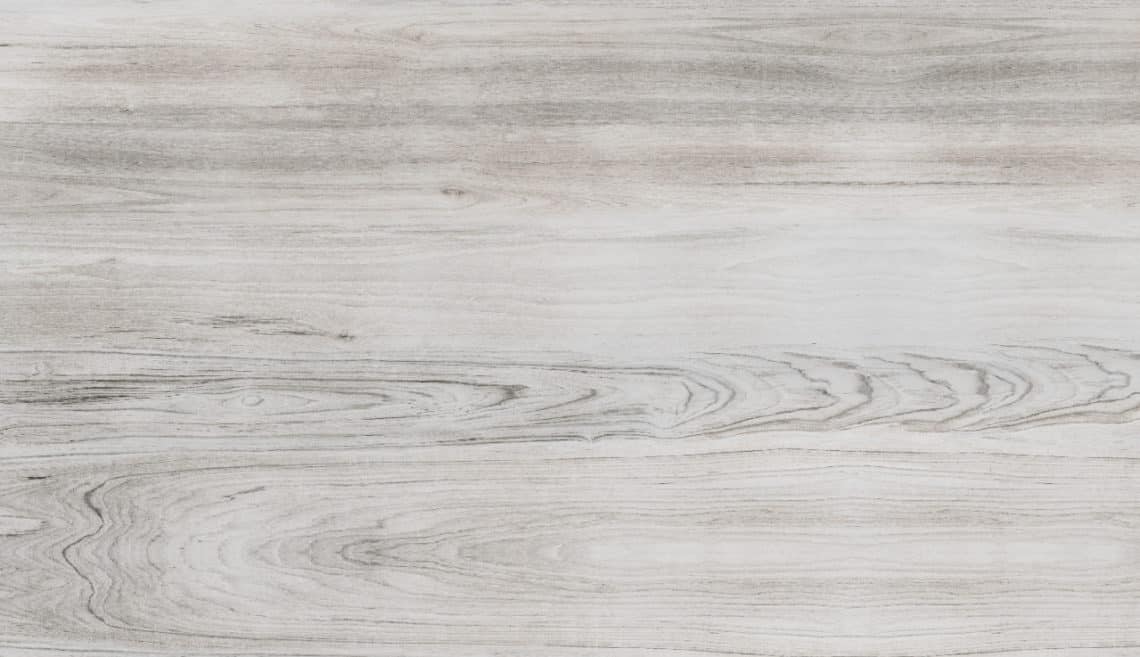
One of the best things about Ashwood is that it is available in a great number of tonal variations, such as white, blue, and green, which can be used for a wide range of constructive and decorative purposes.
- Available in a range of color variations
- Offers high resistance against pressure and damage
- Ensures beautiful finishes
- Comparatively affordable than most other options
- Can be susceptible to damage caused by high temperatures
-
Pine
Pine is a common species of wood that is extensively used for construction and interior decoration. It provides a decent blend of the durability of hardwood and the enduring resistance of softwood against regular wear and tear.

Pine floorboards are available in a range of colors and styles, offering you ample choices to match your flooring with the rest of the decor.
These, however, are generally not used in areas of high traffic and mostly retained for indoor purposes.
- Offers a decently durable wood quality
- Offers a range of tones and patterns to choose from
- Costs pretty less than most hardwoods
- Not suitable for high-traffic areas
-
Poplar
Poplar is a common species of hardwood that is widely used for flooring purposes. It holds up well under high pressure and traffic. Poplars can also resist damage and daily wear and tear to a great extent and could be used in places that get medium traffic.
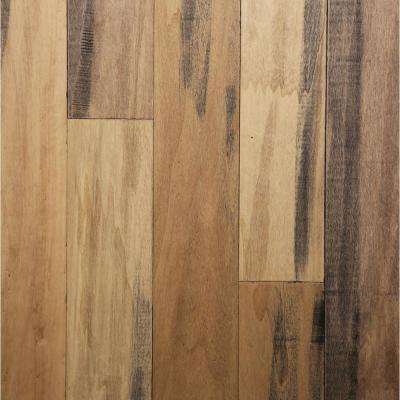
However, the one downside to this is that poplar wood usually doesn’t come with a lot of color options.
- Provides considerable durability and works for most spaces in the house
- Can resist damage to a certain extent
- And affordable flooring option
- Not a lot of variations available
-
Nail-down engineered wood flooring
Nail-down engineered boards are the ones that have to be manually bolted down on the subfloor. These bring in a traditional layout and are usually tougher than other types of engineered wood flooring.
They can take a lot of pressure in weight and could be generally installed anywhere. Owing to the strong layers of wood, nail-downs can also be installed in high-traffic areas.
They give you good value for your money. But the only thing about these is you have to install them all manually involving great physical labor and charges.
- Offers tougher resistance and durability than most other variants
- Works well for high-traffic areas
- Returns good value for the money
- Affordable option
- Physically taxing
- Involves labor charges
In today’s times, it could be challenging to find a good deal on authentic wood flooring. However, it only requires a bit of knowledge and a push in the right direction to help you find the places that have real wood flooring to offer at a great price.
-
Floating engineered flooring
Floating boards involve individual boards, tiles, or planks attached or bonded to each other with glue. These can also come in a snap-shut mechanism.
These aren’t really attached to the underlying floor, for that matter, and are left on the surface. There could be a bit of space left between the boards and the real floor.
These are one of the cheapest solutions in engineered flooring and do provide a fair share of sustenance when it comes to pressure.
However, these are in no way suitable for high-traffic areas and are pretty susceptible to damage and dislocation.
- Pretty inexpensive
- Can be done solo as a DIY project
- Doesn’t involve additional costs
- Variants in style available
- Not a very durable option
-
Staple-down engineered flooring
Staple-downs are pretty similar to my nail-downs in terms of installation. These involve physical labor but not as much as the latter.
The boards are designed to be thin so that the user can easily staple them down using a flooring stapler.
These are mainly used for decorative purposes and aren’t high on durability. These work well as a pretty layer on a separate sub-floor, for that matter.
The cost of these will depend on the quality and style you buy.
- Works well for decorative purposes
- Can be installed by oneself
- Affordable flooring alternative
- Offers little durability
-
Handscraped engineered flooring
This is one of the textures that are available for engineered flooring. In hand-scraped flooring, the finish of the boards is made to have a “scraped” or stripped-off appearance. It makes for a lovely rustic appearance.
Hand-scraping can either be done manually or with a machine. But, in any way, it is always advisable for you to rely on a professional to help you out with it.
Engineered floors with such textures can be expensive, but that will depend on the brand you go for.
- Provides charming finishes
- Looks unique and pretty
- Variants in tones and styles are available
- Can be expensive
-
Distressed engineered floors
The “distressed” texture for engineered flooring is distinctly different from hand-scraped ones in effect and feel. These have more uniform markings and could have features such as fake wormholes.
These, in fact, look pretty elegant and can complement both modern and contemporary decor.
These have more variations from plank to plank and are almost always scraped by machine.
- Looks beautiful
- Complements any sort of decor
- Can work well with other flooring or paneling counterparts
- Can get damaged in high-traffic areas
-
Wire-brushed engineered floors
This particular finish and texture for hardwood flooring involve scraping the wooden boards with a hard-bristled wire brush that reveals the soft grains from the tree’s growth ring. The surface of “heart” of the tree is pulled onto the surface this way, and that looks spectacular for all kinds of decor scenes.
This process can also hide a lot of imperfections in the wood, making a uniform texture.
- Looks stunning against all sorts of decor
- Accentuates the rest of the interior design
- Hides other woods flaws
- Can be significantly expensive
-
Smooth engineered floors
Smooth textures for engineered floors are the basic finishes for it. It usually involves significant polishing techniques to lend the boards a high shine. This enhances the wood’s natural colors, which preserves and accentuates its true beauty.
These are mainly reserved for areas with low traffic as otherwise these polishes can get scraped off.
Such flooring alternatives are comparatively much more affordable than other finishes.
- Accentuates the natural colors of wood
- Complements all kinds of interior decor elements
- Quite affordable than other texture variants
- Not meant for high-traffic areas
-
Engineered flooring in black
Black flooring, unlike most other neutral or warmer tones, is a pretty versatile shade for residential and office spaces.
You could opt for richer shades in mahogany or ebony, for that matter to bring in a blackish-red or blackish-brown finish.
The undertones for the color scheme are essential. These can become more prominent as the wood ages.
In every way, this is a beautiful and unique shade to go for.
- Looks stunning in all kinds of residential or official species
- Accentuates and compliments the rest of the decor
- Becomes more attractive as it ages
- May be expensive
-
Engineered floors in red
Redwoods are highly desired for their luxurious finish and undertones. These are available at all sorts of prices, depending on the wood type and quality.
Species like red oak can have a beautiful pink glow, whereas other exotic types may have russet or browner tones.
These look marvelous and are greatly used for decorative panels and flooring.
- Offers luxuriously rich tones
- Works well for both residential as well as official spaces
- Can develop darker tones as it ages
- Can sustain heat and moisture damages
-
Engineered floors in yellow
Yellow woods are the most common and versatile type for all sorts of flooring options. One of the main benefits of these is that they offer a wide range of styles and color tonal variations from lighter shades to darker, more orange tones.
These are also way more affordable than other shades of wood and are available in all types.
The durability is also generally high for yellow wood boards.
- Offers very versatile flooring options
- More affordable than most other wood shades and finishes
- Offers a wide range of styles and shade variations
- May fade and discolored under heat or water damage pretty fast
Acoustic Properties of Engineered Flooring
Engineered flooring varies in its acoustic properties depending on the materials used and the construction methods. For instance, laminate flooring, comprised of a multi-layer synthetic product fused together with a lamination process, tends to provide a certain level of sound absorption due to its inherent structure and material density. It is effective in reducing footfall noise, a key consideration in multi-story buildings or homes.
Conversely, materials like bamboo and high-pressure laminate (HPL) flooring are denser and therefore tend to reflect rather than absorb sound, resulting in increased echo in space if not managed properly. However, with the addition of suitable underlayments, such as cork or acoustic foam, these materials can also provide good sound control.
The underlayments act as an extra sound-absorbing layer, reducing both airborne noises (such as conversation or music) and impact noises (like footsteps or dropped objects). Different underlayments come with various sound transmission class (STC) ratings indicating their effectiveness at blocking sound. When selecting one, higher STC ratings are preferred for superior sound-blocking performance.
Moreover, the installation method can also influence the sound transmission. For instance, floating engineered flooring installations tend to transmit less noise compared to nail-down or staple-down methods, since they allow for an underlayment that helps in isolating sound.
In conclusion, while aesthetics and durability are crucial in selecting engineered flooring, considering the acoustic properties is equally essential, especially in environments sensitive to noise, you can find even more information in our guide on soundproofing hardwood floors.
Engineered Flooring Costs
Cost is a major factor to consider when it comes to flooring. The overall will generally be split up into two parts when it comes to engineered wood floors as these can’t outdo their more expensive counterparts.
Material Cost
This is the overall price you have to pay for the type of wood as well as the type of flooring system that you’re opting for. Costs for the material and other fixtures can range from approximately $2 per sq. ft. to $17+ per sq. ft.
The average cost for you to pay can come around $3.50 to $6.00 per sq. ft
These are solely the cost of materials. These don’t include installation charges.
Installation Cost
The average cost to pay someone for installing engineered wood flooring could range between $3.00 to $10.00 per sq. ft.
If you’re charged hourly, then it could go as high up as $25 to $30 per hour.
While determining installation cost, then do consider if you’re subfloor needs to be repaired or removed.
Additional factors
- While planning installations, you must first measure the floor size that you want to cover and determine the cost of equipment required. After that, check the cost of the boards and multiply that with the number of boards that you need.
- Do include the cost of all tools and products such as adhesive or resin in the total installation cost and compare the material and hiring cost with that.
- Do include the cost of shipping the materials from the store to your house when buying the material. You can save a few bucks by opting for a store that caters to transportation or getting your own vehicle.
- Consider investing in a few extra boards that may be required for replacing damaged parts.
Conclusion
And that was it for our enormous guide on all types of engineered wood flooring that you can get right now, along with information regarding their pros and cons as well as the overall cost.
We hope it had been a useful read for you and that you find nothing short of the best when it comes to engineered wood flooring.
Related Articles
11 Best Radiant Floor Heating Systems
7 Types Of Flooring To Consider For Your Home
101 Engineered Flooring | The Basics Explained



